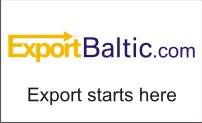Competition, Energy, Gas, Gas Market
International Internet Magazine. Baltic States news & analytics
Saturday, 19.04.2025, 01:23
Europe benefits from competition between LNG and pipeline gas
 Print version
Print version |
|---|
First an
update on what has been happening to LNG imports to the EU. These have
increased significantly in the last few months. In Q4 2018 LNG imports were up
59% compared to a year earlier to about 18 bcm, out of total EU imports in Q4
of 100 bcm.[1] The
high level of LNG imports has continued into the first quarter of this year,
with LNG becoming the EU’s third largest supplier in March 2019 after Russia
and Norway but ahead of Algeria according to ICIS Gas in Focus, a trade report.[2] US
LNG imports increased in particular, surging by 272% in total since a meeting
between Presidents Juncker and Trump in July last year, according to an EU fact
sheet.[3] The
reasons for this are straightforward. Price differentials between the European
market and the Asian markets for the delivery of LNG have shrunk dramatically.
This makes it more profitable for LNG produced in the Atlantic Basin to be sold
in Europe rather than Asia which is further away and therefore more expensive.
This impact has been amplified by an increase in shipping costs. As I described
in my previous article “as a large single market Europe is an attractive
destination for LNG suppliers, if the price is right”[4]
and events have shown this to be true in practice as well as in theory.
So if LNG
imports have increased, what has this meant for imports from other sources and
gas prices in Europe? As one would expect in a competitive market, as the
market share of one supplier has increased, that of other suppliers has
decreased. As expected EU indigenous production has continued to decline by 8%
(3.5 bcm) in Q4 2018 compared to a year earlier. But imports of both Russian
gas and Norwegian gas, the EU’s biggest suppliers, also declined by 6% and 7%
respectively. Their market share of imports fell by 2% each. In fact Russia’s
share of imports was its lowest since the first quarter of 2016.[5] At
the same time “wholesale gas prices in Europe decreased measurably in the
fourth quarter of 2018” falling from 27.8 €/MWh in September to 23.8 €/MWh in
December.[6]
Normally one would expect prices to be higher in the winter months as demand
increases.
What these
figures show is that the EU internal gas market is working. A large single
liquid market attracts suppliers who compete with each other. Additional supply
helps push down prices as existing suppliers have to choose between losing
market share and competing on price. It also shows the nonsense of the argument
that import infrastructure creates dependence. Plentiful spare capacity in EU
LNG import terminals did not lead to EU companies buying more LNG until the
price was right. Similarly the existence of large pipelines did not protect
Russian, Norwegian and Algerian suppliers from losing market share to LNG.
Import infrastructure simply enables producers to get their gas to the EU
market. Once there, EU market rules ensure that buyers across Europe have the
ability to buy gas from whom they wish. As the EU Commission itself notes “recent
developments give a perfect example on the role of LNG in supply
diversification, if the price is competitive enough to bring a new alternative
to current market conditions.”[7]
So are
there any clouds on this otherwise sunny horizon? There are two potential
issues, one of which the EU cannot influence, and the other which is within the
control of an EU member state. The first relates to the state of the global LNG
market. At the moment conditions are benign because a surge in supply,
including from the US, has loosened the supply demand balance and led to lower
prices. As noted above Europe has benefitted from this. However the supply
demand balance is expected to tighten in the next few years as demand catches
up. Secondly there is the risk of external shocks driving up LNG prices. In
2011 demand for LNG surged as Japan closed all its nuclear power stations following
the Fukushima disaster, and generated electricity with gas instead. In 2017 LNG
which was expected to come to Europe went to China instead as it replaced
polluting coal boilers with gas ones. More recently the Financial Times
reported that Japan may again face a shut-down of its nuclear reactors.[8] Europe
will be able to attract LNG so long as it is prepared to pay the price. But if
it isn’t, then the alternative of pipeline supplies is a good one to have.
Thus, far from creating dependence, import infrastructure creates options which
are an essential part of a secure and competitive energy supply.
The second
issue relates to Nord Stream 2. The project is well underway with more than
half the pipeline laid in Russian, Finnish, Swedish and German waters. However
the project is still awaiting a permit to lay pipe in Denmark. Nord Stream 2
has applied twice already for permits, and met all the technical and
environmental criteria necessary for approval. In 2017 the first application
followed a route recommended by the Danish authorities. However, because this
route goes through Danish territorial waters, it is subject to approval by the
Danish Foreign Minister. The permit has been sat on his desk since January 2018
with no hint of either approval or rejection. As a precautionary measure in
2018 Nord Stream 2 applied for a second route that did not go through
territorial waters. Again this met the relevant technical and environmental
criteria but rather than approve the permit, in 2019 the Danish Energy Agency
(DEA) has asked Nord Stream 2 to apply for a third route. This Nord Stream 2 is
doing but under protest. Nord Stream 2 has appealed against the DEA decision to
request a third route application.
Nord Stream
2 is necessary to meet the EU’s growing demand for gas imports as EU own
production continues to decline and other import sources such as Norway and
Algeria cannot increase enough to meet this demand. Existing pipelines from
Russia including transit via Ukraine are already full according to the Oxford
Institute of Energy Studies: “The average annual utilisation of Russia’s export
capacity has risen from 63% in 2014 to 87% in 2017, although in key peak demand
winter months this means that the system is practically full.”[9] Lack
of sufficient infrastructure could lead to prices rises. “If the rise in
European import demand is substantial enough, this bottleneck could be
sufficient to cause a ‘shortage’ of Russian gas relative to demand, and price
surges on the European spot gas market.”[10]
As we have seen gas via Nord Stream 2 will compete with LNG for market share,
to the benefit of all European gas and power consumers. As additional import
infrastructure it gives Europe more options as to how and from whom to import its
gas. It is ironic that a country, whose own gas consumption is less than 1%
of EU demand, may end up costing
European consumers billions of Euros by delaying the project unjustifiably.
[1] European Commission “Quarterly Report on European Gas Markets.
Volume 11.” April 2019
[2] ICIS Gas in Focus. “LNG becomes EU’s third-largest supplier.” 15th
April 2019
[3] European Commission “EU – U.S LNG trade. U.S liquefied natural gas
(LNG) has the potential to help match EU gas needs.” May 2015
[4] Alex Barnes “Will Nord Stream 2 help Europe meet its future gas
demand needs?” The Baltic Times Winter Magazine 2019
[5] European Commission “Quarterly Report on European Gas Markets.
Volume 11.” April 2019
[6] Ibid.
[7] Ibid.
[8] Financial Times. “Japan’s nuclear reactors face near-total
shutdown. Regulator refuses to extend deadlines for installing antiterrorism
measures. ” 25th April 2019.
[9] James Henderson & Jack Sharples “Gazprom in Europe – two “Anni
Mirabiles”, but can it continue?” Oxford Institute of Energy Studies March 2018
[10] Jack Sharples “Ukrainian Gas Transit: Still vital for Russian gas
supplies to Europe as other routes reach full capacity.” Oxford Institute of
Energy Studies May 2018








 «The Baltic Course» Is Sold and Stays in Business!
«The Baltic Course» Is Sold and Stays in Business!

